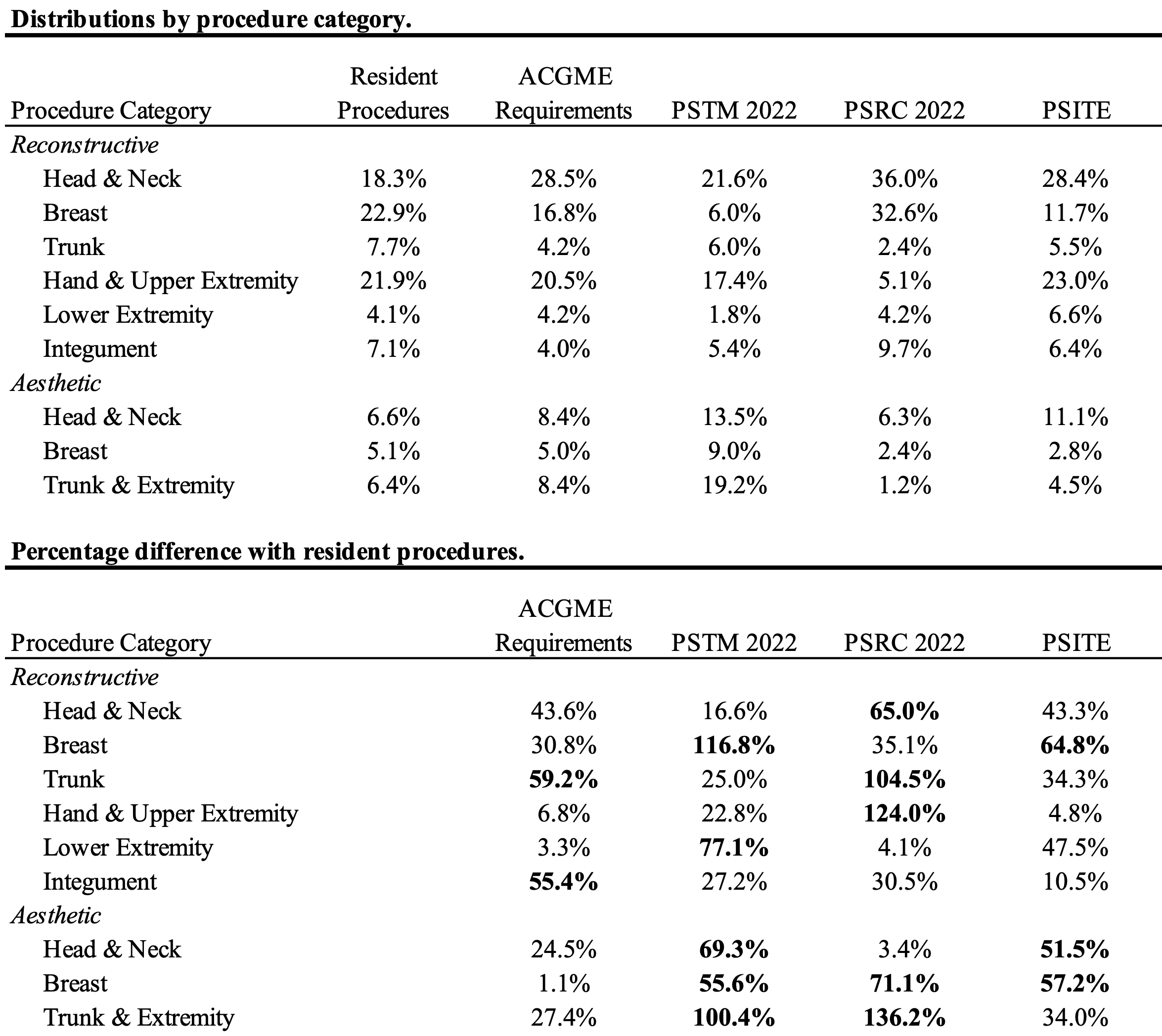A Comparison of Graduating Plastic Surgery Residents' Case Logs with ACGME Requirements, Content at National Meetings, and In-Service Examination Test Items
Aidan W. O'Shea*1, Keith R. Sweitzer2, Derek Bell2
1University of Rochester School of Medicine and Dentistry, Rochester, NY; 2Department of Surgery, Division of Plastic Surgery, University of Rochester Medical Center, Rochester, NY
Plastic surgery residents complete thousands of procedures during their training. We aimed to examine how the distribution of graduating resident case log procedures compares to ACGME minimum procedure count requirements residents are subject to, content on the in-service examinations they sit for, and programming at two major annual meetings.
Nine procedural categories were identified based on ACGME and in-service examination categories, including six categories of reconstructive and three categories of aesthetic procedures. Three-year averages for the number of procedures completed in each category by plastic surgery residents graduating in 2019-2021 were calculated from ACGME national case log data. ACGME procedure count minimum requirements were also ascertained. The titles and durations of medical programming sessions scheduled for PSTM 2022 and the PSRC Annual Meeting 2022 were abstracted from online data. Sessions were assigned to a single procedure category when possible. Finally, test items from the 2020-2022 administrations of the ASPS Plastic Surgery In-Training Exam were similarly assigned to a single procedure category when possible. A percentage difference test was used for comparison.
Percentage differences are noted in Table 1. ACGME requirements had the lowest percentage differences compared to case logs. Meeting content at PSTM and PSRC had the largest percentage differences with PSTM being skewed towards aesthetics and PSRC towards reconstructive head & neck surgery.
The criteria and standards by which plastic surgery residents are evaluated and content at national meetings differ from the procedures they actually complete during their training. We hypothesize that the findings reflect the heterogeneity of the specialty as well as possible vendor sponsor bias. Following these comparisons will likely prove useful in the continual evaluation of plastic surgery residency training, especially in the preparation of residents for the variety of practice settings and further training they pursue.
Table 1. Distributions of procedures performed by graduating plastic surgery residents, ACGME minimum requirements, medical programming at PSTM 2022, abstract presentations at PSRC 2022, and PSITE test items across 9 plastic surgery procedure categories. Percentage difference test results comparing case numbers to the other categories. Notable differences are bolded.
Back to 2023 Abstracts


